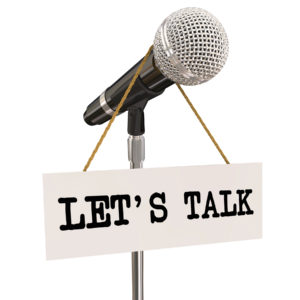When you’re creating a radio commercial, you have many decisions to make concerning the sound of it. From what kind of voice (Male? Female? Young? Old? Accent?), what kind of tone (Hard sell? Sincerity? Announcer? Person-Next-Door?), sound effects, and music bed.
Those last two are what we’re talking about today.
Your spot can be as intricate as you want- as long as there’s a reason for the intricacy. Those reasons we’ll discuss later. However, when there are no sound effects or music, the spot is called “Dry.”
Why would you want a “Dry” spot when you could decorate it with sound effects (a horn honking, a baby laughing, a beer opening, a lawn mower starting), or you could put a music bed under it that’s pleasant and supports your message?
Several reasons, actually.
1. Your spot is playing on “Talk Radio.” The listeners of talk radio aren’t interested in music in their radio consumption; otherwise, they wouldn’t be listening to talk radio. They want to either hear an interesting conversation between other people, or be spoken to personally as if the announcer is talking to them. Your spot will match their consumption, so that they don’t “tune out.” If it’s written well, and the voice talent doesn’t “rip and read,” instead thinking through the message’s meaning how it should be delivered, then the talk radio listener will still pay attention.
2. Make it stand out from the crowd. If a music station’s stopsets are filled with commercials filled with music beds, your “quiet” spot will stand out. It might even be a welcome respite for the listener. Now, some music stations will fight you on this, saying that their commercials must have music to “keep the momentum” or “keep up the energy.” What they’re actually saying is, they want your spots to resemble their music, so that they can keep their station’s sound consistent. That only serves the station’s programming department’s image of itself, and doesn’t serve you. If music is necessary for your message, great. But if your message blends in with everything else…what’s the point? You need to heard.
3. There’s no logical reason for music. Sometimes, less is more. Sometimes, words don’t need any other noise than the sound of them being spoken. Those are great words. That, is a great commercial.
4. The Pregnant Pause. Paul Harvey was a master of the pregnant pause. It’s that point in a story/message, when you suddenly…
…pause.
It draws attention to the word(s) that come after the pause. It’s like pointing at the upcoming moment and telling the listener “Wait, here it comes…wait for it…waaaaiiiiit for it…..” Then boom. The pregnant pause gives birth to focused communication. Thank you, Mr. Harvey. Good day.
So, a spot with no music, and no sound effects, can be just as effective as one with both. All you need to do is make sure you’ve thought about the “why” of what you’re doing. And if you not writing your spot, ask your copywriter what his/her “why” is.
If they don’t know…find another copywriter.

